Coca-Cola fizzes with sustainable packaging innovation


The Coca-Cola Company has unveiled the world’s first PET plastic bottle made entirely from plant materials at the World Expo - Milan.
PlantBottle packaging uses patented technology that converts natural sugars found in plants into the ingredients for making PET plastic bottles. The packaging looks, functions and recycles like traditional PET but has a lighter footprint on the planet and its scarce resources, says the company.
Nancy Quan, global research and development officer, The Coca-Cola Company, described the new bottle as a pioneering milestone within the company’s packaging portfolio. “Our vision was to maximize game-changing technology, using responsibly sourced plant-based materials to create the globe’s first fully recyclable PET plastic bottle made entirely from renewable materials.”
PlantBottle packaging can be used for a variety of packaging sizes and across water, sparkling, juice and tea beverage brands.
Currently, the company uses sugarcane and waste from the sugarcane manufacturing process to create PlantBottle packaging.
Best Buy: E-Waste Take-Back is Excellent Customer Service
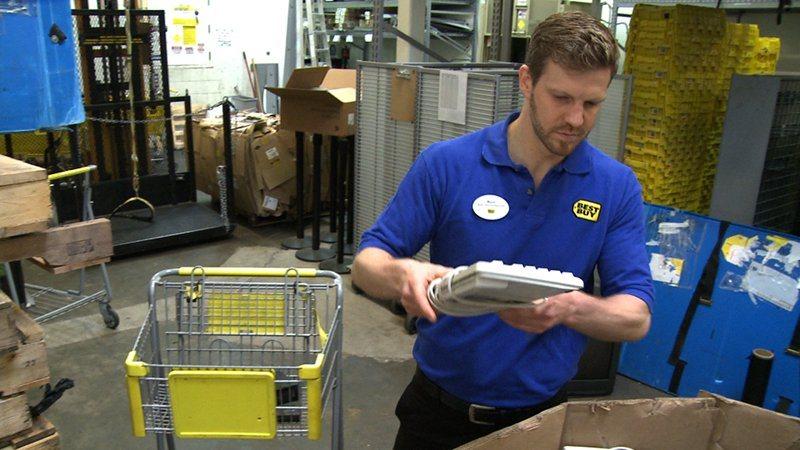

Americans throw away 400 million units of consumer electronics every year, according to the Electronics TakeBack Coalition. While many electronics contain valuable precious metals that can be recovered during the recycling process, electronic waste is also comprised of toxic materials, like lead and mercury, that can contaminate the soil and waterways if e-waste ends up in the landfill, rather than being disposed of properly.
But in 2009, electronics retail giant Best Buy decided to become part of the solution to the growing problem of e-waste, launching a national take-back and recycling program for unwanted electronics like cell phones, computers and TVs in its retail stores. The initiative has been a huge success, meeting its initial goal to collect 1 billion pounds of e-waste and large appliances by the end of 2014 six months ahead of schedule, Scott Weislow, Best Buy’s senior director of environmental services, told TriplePundit.
“Today, we collect more than 409 pounds of e-waste and large appliances for recycling every minute our stores are open,” Weislow said. “We estimate average annual growth of the program in the 20 percent range.”
The company’s e-cycling initiative is an example of extended producer responsibility (EPR), the concept that a product’s manufacturer or retailer should accept responsibility for the environmental and social impacts of the product throughout its lifecycle – from material sourcing and production to consumer use and disposal.
EPR for difficult-to-recycle products like electronics has numerous advantages for the environment and society at large: This policy approach can encourage manufacturers to design electronics in a more environmentally and socially responsible manner, as well as relieve local governments and taxpayers from the high costs of collecting and disposing of toxic e-waste.
But the benefits of EPR are less clear and less studied for the businesses actually taking responsibility for managing electronic waste. Back in 2012, after three years of running its electronics waste take-back program, the initiative was self-subsidizing but “just barely” profitable, GreenBiz reported. So, why would a company like Best Buy decide to get in on the e-waste business, especially when it’s not turning a profit from the program?
For Best Buy, running an e-cycling program is about doing its part to tackle the e-waste problem, while offering excellent service to its customers, Weislow said.
“We started the program primarily to be a resource for customers seeking a convenient, responsible place to recycle their aged electronics and appliances,” Weislow said. “Best Buy is the world’s largest consumer electronics retailer, and we take our responsibility to positively impact our world very seriously. What better way to do this than by offering a fast, free and convenient way for [customers] to dispose of their unwanted gadgets?”
Best Buy recognizes that e-waste is one of the fastest-growing waste streams on the planet, Weislow said, and the retailer hopes its recycling and trade-in programs find second lives for devices and materials, as well as prevent some of the environmental and social impacts of mining raw materials for electronics.
“The cost and energy expended to mine raw materials far exceeds the cost and energy consumed to recycle and reuse materials from old products,” he said. “Many of these raw materials also may be mined in various parts of the world under extremely harsh and inhumane conditions. By collecting and recycling older products, we minimize these costs and damage caused by mining, and most importantly, help encourage changes to eliminate unacceptable work conditions globally.”
What has been the customer response to the take-back program and such lofty goals?
“We recently conducted customer research around our recycling and trade-in programs … [They] clearly resonate with people, who say they provide valuable, convenient options to address a personal growing need,” he told us.
At a time when Best Buy is vying for customers against brick-and-mortar discount retailers like Walmart and online stores like Amazon, free e-waste drop-off is another valuable service Best Buy can offer customers that its competitors can’t.
“Our ultimate goal is to be [the] preferred retail destination for consumers,” Weislow said. “If we continue to deliver our recycling service as one of the many expert services available from Best Buy, we anticipate growth of our customer base, enhanced loyalty – which we see in increased membership in our MyBBY Rewards program – and strong customer satisfaction ratings.”
But it’s not just Best Buy’s customers that have been pleased with the company’s e-cycling initiative.
“[Best Buy] discovered that this [take-back] program was a huge hit with its employees – a tangible employee morale-booster,” said Barbara Kyle, national coordinator for the Electronics TakeBack Coalition. “Its employees were proud to be part of a place that was not just selling these products, but doing its part to make sure they get recycled when consumers are done with them. Employee turnover is expensive. So, programs that improve employee satisfaction have financial benefits, too.”
In September of last year, Best Buy announced a new goal for its already-successful e-waste program: to collect an additional 2 billion pounds of e-waste by 2020, Weislow said. And while the company may not see any short-term boost to its bottom line from all those cell phones and laptops saved from the landfill, it’s clear that the program will keep Best Buy’s employees and customers happy – and that may be just as important for the company in the long run.
Image credits: Best Buy
Q&A: Recent Grad Mike Herod Proves It's Never Too Late
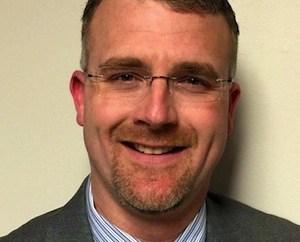

It can seem daunting to continue your education after breaking into the job market, starting a family and settling into a "forever" home. But students like Mike Herod, a recent graduate of the Executive Master's in Sustainability & Leadership (EMSL) program at ASU, prove it's never too late to go back.
TriplePundit talked with the returning veteran to find out more about his decision to pursue a sustainability education and how it impacted his career.
TriplePundit: Let's start by talking about your experience at ASU. What was your focus of study, and when did you graduate?
Mike Herod: I am a bit of an oddity with ASU and our industry. I started my education late in life. I had a career and family. After returning from Iraq, ASU was presenting about some new degree program they were starting in sustainability. At the time (2006), I didn’t know anything about sustainability. In fact, I was only invited because I had built a few LEED-certified projects and my director thought I would like the presentation, so he sent me.
That presentation began my journey into sustainability full-time. I enrolled that very semester for a BS in sustainability. I think I was the second group of students at the time. I completed in the winter of 2011.
Fast forward three years, and ASU reached out for another new program, the EMSL (Executive Master’s in Sustainability Leadership). It was a no-brainer for me. I enrolled at once. So, now I hold both a BS in sustainability (2011) and an EMSL (2015).
3p: What made you decide to pursue a sustainability degree?
MH: At first, I had a pocket full of Uncle Sam’s money and thought: Why not? I didn’t like what I saw in Iraq and felt something had to change about the current system we found ourselves in. Joining the EMSL program was not an option for me. I knew what my BS in sustainability was doing and knew this could only build upon that.
Now that I have completed it, ‘build upon' is not good enough. That degree and the four-thread leads gave me more tools and techniques than I could ever ask for.
3p: What are you up to now? Briefly describe your current role and responsibilities and how long you've been on the job.
MH: I have been a sustainability consultant since the summer of 2012 when I was recruited by Xpedx (an IP business) to help its clients with increased sustainability.
I was recruited again for my current position as the Sustainability SME for Border Patrol where I serve as their advisor for the sustainable improvements of their portfolio, which includes thousands of structures. I've been serving them for just over a year now.
I am also slowing building my own consultant company to help small- to medium-sized organizations in the Maryland, Pennsylvania, Virginia and Washington, D.C. areas. I have found for every brand-name company, there are thousands of smaller firms that support them, and each of them needs guidance for improved sustainability. I like working with the federal government, but my passion is helping smaller firms to see the benefits of sustainable decisions.
3p: Have you found that your sustainability education was a benefit in the field?
MH: Without a doubt! I was recruited for the last two positions, and my salary has nearly tripled. My BS was great and opened doors, but the EMSL gave me the leadership tools to really turn the tide with those I work with.
People are intimidated by the term 'sustainability' and oftentimes don’t know where or how to start. Both these degrees gave me the tools and confidence to help people see a better and brighter future. I've had the great privilege to work with national brands, federal departments, nonprofits, local schools and colleges, entrepreneurs, and small firms.
The degree fills the voids where your passion stops and the implementation begins. Your passion will get you to the table and will carry your drive. But you need the systems understanding, global context awareness and communication strategy to make lasting changes and improvements.
3p: Do you have any advice for students who are thinking about a sustainability degree?
MH: Yes: Find out what you are passionate about, and I guarantee sustainability will improve it. Try to find a degree that fits your passion but also is based with sustainable principles.
My goal, and I may not see it in my lifetime, is to see the term and degrees disappear because the notion of viewing every choice and decision as a sustainability challenge becomes second nature to us. But for now, I am so very thankful the degrees are there to give us the tools to spread the word and have the credentials behind us.
3p: What's your biggest sustainability pet peeve and why? Disposable grocery bags? Trash in the compost? Cars double-parked in the bike lane? Share your thoughts!
MH: That’s easy: greenwashing. Consumers already don’t trust most major brands, and when you add the labels of ‘natural’ or ‘eco’ with no claims or verification to the notion, that just creates more distrust.
I feel sustainability will succeed where the environmental movement has stalled. Sustainability moves past environmental and into the money and the people. That is why it is becoming mainstream. We can be a very proud country; we have pride in ourselves and what we produced. Don’t tarnish that by claiming something as good but realistically makes no improvements. As our grandmothers used to say, “if you can’t say anything nice or true, don’t say anything at all.”
Qatar World Cup Proves to Be Costly for Migrant Workers


It’s Dec. 2, 2010, and FIFA President Sepp Blatter is set to announce which nation will host the World Cup in the distant 2022. Australia, Japan, South Korea, the United States and Qatar all threw their hats in the ring to host the prestigious summer tournament that takes place every four years.
Qatar seemed like the sure dark horse. A nation hardly eclipsing 2 million people; a nation engulfed by the hot, dry sun; a nation with no history of soccer and no architectural foundation to host a tournament of its size had no chance to receive the bid. But it did, and not much has gone right since.
Of all the reasons you could argue Qatar wasn’t suitable to host a World Cup, only the last one induces controversy. Although Qatar is a small Arab country, fans from all across the globe will still load the stadium with tons of support and outcry for their team. Although Qatar is irrefutably humid, the stadiums built for the soccer tournament are climate controlled and solar reducing. And, although Qatar’s soccer history is far from rich, who doesn’t love a hometown underdog? And that brings us to the last point.
Qatar’s lack of readiness to host the World Cup is beyond belief. The country must sprout up nine brand new stadiums and renovate three to hold the desired capacities for these games. Upon receiving the bid in 2010, only one stadium, Khalifa International Stadium, held a capacity of at least 40,000 fans. To compare, the average attendance of the 2014 World Cup in Brazil was 52,762.
Unemployed migrants from Nepal, India, Sri Lanka and Bangladesh, among others, went to Qatar seeking work and money, but instead they found grueling hours in the unforgiving heat. More than a year ago in May of 2014, the Qatar government commissioned a report stating just shy of 1,000 workers have died while working.
A haunting report from the Guardian revealed that Nepalese workers, the most represented group working on the stadiums, died at a rate of nearly one a day, many of them young men who suffered from heart attacks. The investigation also alleged that some Nepalese men haven’t been paid for months, employers have confiscated workers’ passports and identifications, laborers are being denied access to free drinking water, and there is evidence of forced labor.
It’s not only the task of building stadiums scheduled to hold an upwards of 86,250 viewers that are threatening the lives of the workers who made the journey to Qatar, but also the living conditions. An ABC report found that in some districts in Doha, the oil-rich country’s capital, 300 men live in 20 rooms -- sharing kitchens, sleeping-space, bathrooms and, most of all, illnesses.
According to some estimates, Qatar will spend $100 billion on projects for the World Cup. On top of building the stadiums, the country has pledged $20 billion on roads, $4 billion on interconnectivity between Qatar and Bahrain, and $24 billion for a high-speed rail network. That’s all without mentioning the accommodation this country is going to need to support the hundreds of thousands of fans that will need hotels to stay in.
The migrant workers are also in huge debt to the recruitment agents that secured their jobs for them in Qatar. The debts are climbing with interest rates as high as 36 percent, and workers aren’t getting paid sufficient wages, as little as $50 a week if they are fortunate enough to be paid at all. Without documentation, these migrant workers are considered illegal aliens and often can’t leave without fear of arrest because of Qatar’s kafala sponsorship system, which restricts workers from leaving the country without their sponsor company’s permission.
This isn’t the only time FIFA made the news for a less-than-glorious feat. Last week, at a hotel in Switzerland’s mountainous capital city of Zurich, 14 soccer and marketing FIFA officials were arrested and set to face indictment in U.S. court following a bribery scandal. Just days later, Blatter, the president since 1998, was re-elected as the chief man in FIFA despite being the face of the scandal, which is surrounding the authenticity of Qatar’s 2022 World Cup bid.
Blatter originally claimed the United States and England went arrest-happy because they were denied bids to be World Cup hosts, but the investigations continued. Then, the news broke on Tuesday that Blatter will step down as the head of FIFA's governing body, but only after its organizing committee holds a vote "for the election of my successor," he said at a lunchtime press conference. FIFA is in need of a "profound overhaul," Blatter conceded, but it remains to be seen if this will happen.
Compared to Brazil’s World Cup in 2014, which saw eight people die in construction-related accidents, Qatar’s soon-to-be hosted tournament is looking more like a calamity than a victory. As the death toll rises nearly every day in the country that shares its border with Saudi Arabia, the International Trade Union Confederation suggested up to 4,000 lives could be lost as a result of the games.
All FIFA has said of the matter is that Qatar will remain the host site for the 2022 games featuring 32 of the world’s best teams. Qatari government promised some reform a year ago but doesn't have much, if anything at all, to show for those promises.
The nine new state-of-the-art stadiums will be dismantled after the games seven years from now and reassembled into 22 stadiums in developing countries around the world. This task, if no labor reform is put in place at the time, will likely cause even more deaths and more strife for the migrant workers trying to make a living.
The potential of 4,000 deaths -- all for a month-long tournament in June and July.
Image credit: Omar Chatriwala/Flickr and Mark Kirchner/Flickr
Consumer Brands, Big Investors Call for Stronger Sustainable Palm Oil Standard
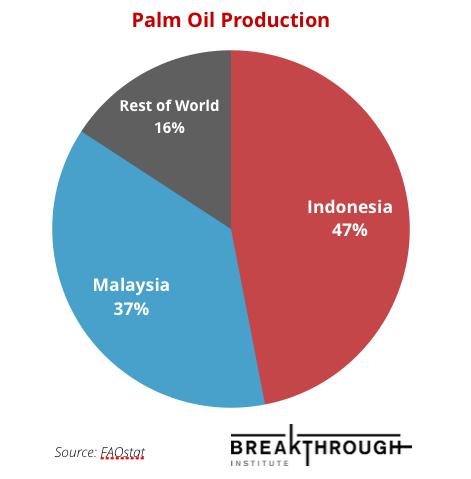

In business, as is in other areas of regulated human endeavor, it pays to cheat – at least until you're caught and if the penalties are commensurate with the seriousness of the transgressions.
Technically it may not qualify as cheating, but market participants that comply with the sustainable palm oil certification standard established by RSPO (Roundtable on Sustainable Palm Oil) are playing on a field tilted in their favor as compared to those who have adopted stronger and more comprehensive standards, according to a group of prominent industry players.
A group of investors and consumer food, beverage and products companies see long-term threats to both consumers and their businesses from RSPO sustainable palm oil certification standards that are too weak and/or narrowly defined. More specifically, they're calling out RSPO with regard to the aspects of its sustainable palm oil certification standard regarding human rights and deforestation.
Joining with multinational companies representing leading brands, institutions responsible for investing some $4 trillion in assets sent a letter to RSPO on June 1, just days ahead of its hosting the European Roundtable. Assembled by New York Comptroller Thomas P. DiNapoli and mutal fund company Green Capital Management, the petitioning group calls on RSPO “to prohibit deforestation in palm oil supply chains and include additional environmental and human rights protections.”
Pushing for stronger palm oil sustainability standards
From cosmetics and candy to industrial lubricants and biofuels, studies have shown that palm oil is used in no less than 50 percent of packaged goods sold worldwide. Given such widespread and intensive use, palm oil plantations have big impacts, not only on ecosysems and wildlife, but also on human populations and local economies.
Huge palm oil plantations developed on peatlands in southern Malaysia, for instance, have not only destroyed habitat of threatened and endangered species such as the orangutan, but they have also produced air pollution that spreads across the region. Long-burning fires in these peatland palm oil plantations have caused air pollution in Singapore to reach toxic levels at times.
Albertsons-Safeway, ConAgra, Coop Switzerland, Dunkin’ Brands, General Mills, Mars, Inc., Seventh Generation, Starbucks, the Kellogg Co. and Walmart are signatories to the letter requesting RSPO to strengthen its standard. So are five of the top 10 corporate purchasers of palm oil globally: Colgate-Palmolive, Kao Corp. (Japan), PepsiCo, Procter & Gamble and Johnson & Johnson.
In the letter, they urge RSPO to prohibit palm oil plantation development and production on high-carbon forest and peatlands. They also call on RSPO to strengthen its standard in terms of enhancing protection of human rights.
The nonprofit Ceres, which advocates for the implementation of sustainability standards that address climate change, water scarcity and other pressing issues, hosted a press conference call on June 1. During the call, signatories to the RSPO letter discussed their effort to prompt the self-regulatory organization to strengthen is sustainable palm oil certification standard and enforcement capabilities. As the group explains in a press release:
“[We] recognize deforestation as a significant risk to long-term business models and, consequently, investments ... Palm oil production offers both challenges and opportunities to promote thriving, sustainable economic development. As such, we urge the RSPO to set and enforce standards for truly responsible and sustainable palm oil production.”Specifically, the signatories recommend RSPO
- Conduct an accelerated review of RSPO’s Principles & Criteria and related documents. The review should include recommendations leading to adoption and implementation in 2016 of the following requirements for producers:
- Conserve High Carbon Stock areas;
- Protect peat, regardless of depth;
- Report on greenhouse gas emissions and reduction targets;
- Ensure full traceability back to the field;
- Strengthen transparency and monitoring:
- Improve quality control measures for high conservation value and human rights assessments to ensure objective, rigorous auditing and verification, and grievance processes.
With estimated annual revenues of some $44 billion, palm oil producers are leading agents of deforestation in tropical regions that are home to the earth's rapidly diminishing stock of tropical rain forests. These not only serve as massive carbon sinks, but also the foundation of ecosystem-based livelihoods and modern versions of traditional lifestyles. Globally, the palm oil industry is the source of 15 to 20 percent of greenhouse gas emissions, according to the EPA, the letter signatories point out,
“Companies and investors increasingly recognize that widespread forest clearance degrades the environment and drives conflicts with local communities in ways that pose real risks to shareholder value,” Lucia von Reusner of Green Century Capital Management, an environmentally responsible mutual fund company, was quoted as saying.
“We are calling on the RSPO to provide the assurance that strong protections are being upheld throughout palm oil supply chains, and to maintain its credibility in the marketplace by strengthening its standards to align with best practices that many of its member companies have already adopted.”
RSPO has faced challenges from a variety of direct and indirect stakeholders that call into question the legitimacy and credibility of its standards and enforcement capabilities. That's followed over the course of decades of rapid palm oil plantation development and growth in production and market demand.
This past March, RSPO took the unprecedented step of revoking the memberships of a lengthy list of members. More than half of those ejected were companies from leading palm oil-producing countries such as Malaysia and Indonesia, as well as others from Colombia and the Philippines. Also among those ejected from RSPO were U.S.-based consumer products companies, including Hain Celestial Group, WestSoy, Rice Dream and Alba Botanica.
*Image credits: Showtime, "Years of Living Dangerously" via the Breakthrough Institute; 2) FAOstat
How to Bridge the Gap Between Your Business and Engineering Teams


Editor's note: This post originally appeared on Unreasonable.is.
By Ara Howard
Engineers are always supposed to be right. Historically, that has made sense. When you build a bridge, you get that shit right. When you launch a rocket to the moon, you get that shit right. When you build a house, your job is to make sure it doesn’t fall down. Software is different. It fails. We don’t know all of the infinite possibilities of getting things wrong. However, people still look at it as being a traditional engineering discipline, where failure is unacceptable. This is driving business and tech culture apart.
Think about all of the companies that have been successful with technology. Almost all of them were led by great engineers who later became great businessmen. Think Bill Gates and Steve Jobs. In almost all tech companies today, problems start from an initial separation within the organization. Due to a shortage of tech talent, especially in emerging markets, most companies don’t have the luxury of having someone who speaks both languages. Each group operates differently, which creates a situation of fundamental misunderstanding.
Here at DOJO4 in Boulder, Colorado, our mission is to build software to amplify the work of the world’s most impactful organizations through technology and design. We also embrace failure and treat engineers like humans. Below I share with you three realizations that might help an entrepreneur bridge the gap.
1. Tech and business teams have very different cultures
Programming languages are as different from each other as Nigerian culture and Alaskan culture. They have completely different fundamental concepts. Is it ok to fail? Should you fail fast or be security conscious? Do you value doing things transparently and failing publicly? Or would rather put something out there only if it’s perfect? A lot of entrepreneurs pick a tech team that is highly capable, but not necessarily a cultural fit.
Consequently, this translates into misaligned communication—the root of all problems. This seems obvious, but a lot of entrepreneurs don’t actually realize that by definition, engineers are often introverts. While the CEO might play golf, they go rock climbing. While the CEO networks at a conference, they use the time alone on their laptops to finish “that idea” they had last night. They often work, go home, eat, and work again with less face time than other people in their company.
They speak languages that are fundamentally different than English—turning ambiguous, contextual ideas into software that is completely unambiguous and non-contextual. It’s really important to have people on both sides to bridge this gap in thought process—you need business people that understand the pressure of technical execution, a tech founder that loves karaoke, and engineers who speak human.
2. It’s important to align tech and business cultures
The process of software development is still very siloed and top-down. For years, engineers have built things they have been handed, and have not been required to speak human because they have been excluded from the most important part of designing solutions: understanding people. Now more than ever, this is a crisis because software is really powerful. The world doesn’t function without software anymore. Developers have forgotten this. Because programming is so powerful, developers have the responsibility to do it right—especially in the impact space.
In order to better engage developers, a more holistic approach is needed on the business side. CEOs don’t like to think about failure, but the reality is that software fails. Every piece of software has millions of features that require decisions. As an entrepreneur, you can’t manage all of those decisions. Not only will your tech team make decisions on your behalf, they will link directly to the happiness of your end users. This is a big deal, and it becomes a problem if engineers obsess over something the end user doesn’t care about, if they are afraid of failing early and often, or if they are solving the wrong problems. Then, there’s no room for iteration.
3. It’s the role of the executive team to align those cultures
Many entrepreneurs don’t realize that one of their big jobs is creating culture. Take Twitter execs in Boulder. They talk a lot about sharing code in front of everybody. Sounds simple, except that engineers are typically very closed, afraid of criticism, and concerned with getting things right. After all, they distill human things into robots and make them perfect. It’s risky to reveal mistakes, let alone solicit feedback. Engineers at Twitter explicitly talk about code presentations using the language ‘being vulnerable’. To tell an engineer that it’s ok to be wrong is something that does not happen. It’s a much-needed new school way of thinking.
Then, there’s the approach of Thor Muller, serial entrepreneur and CIO of Off Grid Electric. In February, he posted a job on Medium for a Director of Software Engineering. This wasn’t a normal job posting for any coder. Instead, it was a story of adventure in Africa and changing the world. He traversed the organizational silos, and outlined his company culture in order to allure someone right for the job. Someone who speaks human and gives a shit about what they build.
A tech business hinges on the fact that the tech team has to translate a bunch of crazy ideas into hard reality. It costs a lot of money, and people are going to screw up. It’s an iterative process of co-creation and co-failure, and that’s fine. We have to tear down silos within our organizations, or we all sink.
Image credit: Unsplash
Ara Howard is Chief Technology Officer and Founding Partner of DOJO4, a creative software design, development and media house. His background includes designing large-scale 24x7 satellite processing systems, studying greenhouse gas emissions, analyzing poverty and population growth from space, building lean technology stressing startups, and contributing countless solutions to budding developers.
Term ‘trust’ increasingly misused by companies, study finds


Companies’ use of the word ‘trust’ has risen by a factor of eight in the past decade, indicating an increasing corporate obsession with trustworthiness, according to a study by the Chartered Institute of Management Accountants (CIMA) and co-authored by Robert Phillips.
The study maintains the focus on trust is not always backed up by corporate action. "Trust often spoken is trust rarely earned,” commented Phillips.
An analysis of the use of ‘trust’ – when referring to the concept, not the legal structure – in annual reports of FTSE 100 companies over the last decade, found that the word was mentioned just 38 times in 2005, but has climbed steadily since, appearing on 317 occasions in 2014.
Tony Manwaring, CIMA’s executive director of external affairs, said: “The concept of ‘trust’ has always been misused by companies, but the past ten years has seen it achieve staggering growth as a corporate buzzword.
“This is bizarre, because ‘trust’ is not something companies can directly control – it is an outcome. It does not work as a message. Endlessly repeat the word ‘trust’ if you want, but it will not make people trust you.”
The report comes ahead of the 2015 Anthony Howitt lecture, a bi-annual event organised by CIMA where Phillips, author of “Trust me, PR is dead”, is delivering the keynote address.
Boards need to drive sustainability, says Carbon Trust


Corporate boards are failing to recognize – and act on - the risks and opportunities of climate change, says new research from the Carbon Trust.
The report, Titans or Titanics? Understanding the business response to climate change and resource scarcity, looks at why businesses action today is nowhere near sufficient to address the major environmental challenges faced by society.
Explaining the important role for boards, Tom Delay, chief executive of the Carbon Trust, said: “Businesses are both a problem and the solution. They bring together the productive, technical and financial capabilities to lead the global transition to sustainable, low carbon future. But it is crucial that boards properly assess and quantify the long-term risks and value-creation opportunities from climate change and resource scarcity, steering a safe course in dangerous waters.”
Sir Mark Moody-Stuart, chairman of the Foundation for the UN Global Compact, added his voice to the call for board members to take a greater role: “The report highlights the dichotomy of the two realities acknowledged by most businesses – the needs which must be met today, while beginning on what is often still a relatively modest process of change, and the very much more radical changes needed if we are to meet what can sometimes seem still distant challenges.
"This gap in perceived realities has closed only modestly over the last twenty years. Closing it at the required speed will regard unprecedented alignment and combined action by business, investors, governments and consumers. No one group can achieve progress without the support of the others.”
You can download the report here.
Can this New Business Accelerator Disrupt Poverty with Entrepreneurship?
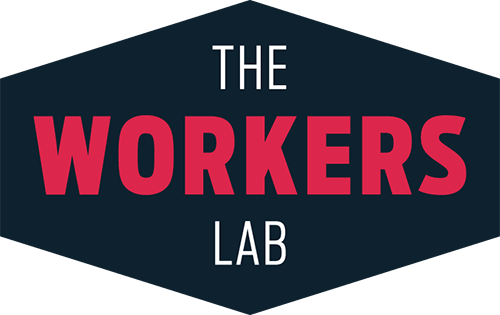

It often seems the tech industry has become nothing short of a never-ending Google alert, providing insight into the ubiquitous trends of the latest product, service or app that will re-shape society for the better.
As billion-dollar valuations crown the next tech sensation fueled by on-demand services and flexible “jobs," the pegging question to increasing innovation is whether or not the changing world of work is truly benefiting society for the long haul. Or at minimum, the large portion of society that rests on the margins of unsustainable minimum-wage jobs and app-fueled contract work that provides little protections for those catering to our 21st century inconveniences.
Arguably, the growing digital division and unmet needs of millions of Americans living below the poverty line intersects with the very real opportunity for entrepreneurs to challenge these issues with tangible and scalable solutions.
Enter the Workers Lab: a startup accelerator that seeks to invest in organizing strategies, business models and platforms that will lift wages and transform the lives of U.S. workers.
The Oakland, California-based organization is rolling up its sleeves with a PhD at its helm, a few well-heeled partners and lots of Silicon-Valley know-how to merge innovation and social impact work into alignment with one goal: to disrupt poverty.
“We must invest in breakthrough tactics to win economic justice, especially in fast growing, low-wage industries that will soon employ the majority of Americans,” shares Carmen Rojas, CEO of the Workers Lab.
The Workers Lab identifies three distinct filtering criteria in which it will support projects and ventures that develop strategies for re-inventing a new U.S. middle-class workforce:
- Generate the necessary economic power to raise wages and economic standards for low-wage workers
- Achieve sufficient scale to impact workers across sectors, industries and geographies
- Realize self-sufficient revenue models.
"When these conditions are met, corporations and revenue-generating ventures experience less employee turnover and have increased customer loyalty," Rojas told Fast Company. "This is great for their corporations as well as for our economy."
Current strategic partners and advisors to the the Workers Lab include an amalgamation of banks, foundations, unions and political parties. The Ford Foundation, Amalgamated Bank and Kapor Capital don the list of just a few partners working to help disrupt the impacts of low-wage jobs.
Through the program, organizers, entrepreneurs and leaders will be paired with advisors and mentors that will provide the necessary support to turn ideas into reality. Though not stated in detail, access to funding and resources will also play a factor in helping projects scale.
Still in its infancy, the Workers Lab could prove to be a successful starting point for the role of incubators in the future of challenging poverty and equity through the lens of entrepreneurship. It remains unclear, however, the long-term role the incubator will play in developing the ventures birthed from this program and what metrics will be evaluated to determine the impact of developed solutions.
Applications for the lab’s Summer Institute program, held in Oakland, California from July 28 to July 30, are now being accepted until June 9. The three-day session offers an introduction to business planning and high-level coaching to help entrepreneurs sharpen their business plan.
Image credit: The Workers Lab
Cause Marketing: The Success of Michelle Obama’s Drink Up Campaign
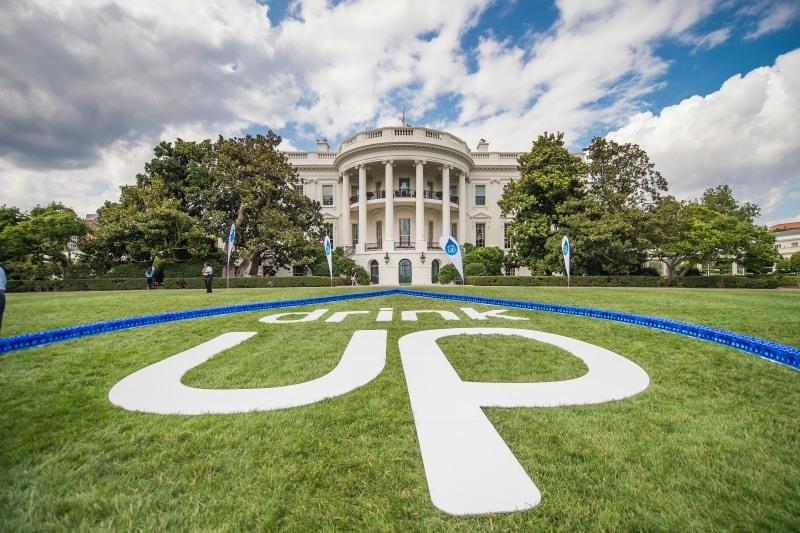

The key to social marketing is to get people to change their behavior. A successful campaign is clever, has a measurable social impact and, most of all, gets people to think or act differently.
In a world where we are constantly bombarded with all sorts of messages, it’s difficult to measure the effectiveness of a campaign. Are our advertisements being seen? Is our campaign impactful? New consumer tracking techniques are being developed that help us get a little closer to answering these questions.
The Drink Up campaign
Drink Up is a public health campaign that is a part of First Lady Michelle Obama’s anti-childhood-obesity initiative. It is different from the ordinary PSA. Instead of telling people what not to do, it adopted fun, positive messaging that encourages people to drink more water. The campaign featured two public service announcements seen 700 million times over a 15-week period throughout the U.S. — in 15,000 stores, doctors’ offices, gas stations, malls and other highly-trafficked places. Organizers also developed a wide-reaching online ad campaign which featured historic images of Muhammad Ali and Albert Einstein. They even installed talking water fountains in Brooklyn Bridge Park in New York City. The primary purpose of the campaign is to curb obesity by promoting water as the drink of choice.The campaign is powered by Partnership for a Healthier America, an independent group founded in 2010 in conjunction with Obama’s Let’s Move! campaign. It works with businesses to change how they sell products and shift consumer behavior toward healthier choices. The group launched Drink Up in an effort to convince people to drink more water, any water — whether bottled, tap or filtered — especially in lieu of sugary drinks that contribute to weight gain and diabetes risk.
The result
According to new data from Nielsen Catalina Solutions, a third-party marketing agency, the Drink Up Campaign could actually be effective in nudging people to drink more water. The company reports that the campaign delivers a 4 percent increase in bottled water sales among viewers of the ads. This equates to not only hydration, but also over $1 million in retail bottled water sales.
To measure the effectiveness of the campaign, NCS focused on the purchasing habits of households that were exposed to Drink Up ads during a 13-week period. Researchers found a lift in bottled water and water filter purchases among households that were exposed to the ads. This was in comparison with purchases from a control group of households that did not see the advertising.
In a second study, NCS determined two groups that seemed to respond more favorably to the campaign, “Well Beings” and “Fence Sitters." The Well Beings, or people already striving to live a healthy lifestyle, were more responsive -- driving more than 51 percent of the incremental retail sales. They generated $143 in sales for every 1,000 ad impressions served. Comparatively, the Fence Sitters, or people who often think about getting healthy but need a little inspiration, contributed 14 percent of the sales volume and generated $16 in sales for every 1,000 impressions.
The feedback
According to an article published by Forbes, the obesity reduction initiative didn’t go down so smoothly. Bottled water may be good for people’s health, but it is terrible for environment. The campaign, which partnered with beverage giants like Nestlé, Coca-Cola and PepsiCo, is under attack by many environmental activists.
In an article titled, Why Activists Shouldn’t Be Hosing the First Lady’s ‘Drink Up’ Campaign, Hank Cardello argues that it doesn’t matter whether the goal is clean and freely available drinking water, healthier beverage choices, or less plastic in landfills. These are all worthy aspirations, but they lose sight of the bigger picture.
“Regardless of their agenda, it’s safe to say that everybody supports efforts to curb childhood obesity. Trashing the beverage industry — which can mobilize its considerable product development and advertising resources (nearly $1 billion in advertising spent last year by Coke, Pepsi and Dr. Pepper alone) on behalf of water — will not move the needle one bit in solving the problem," Cardello wrote.
"In fact, excluding the beverage industry from the water business will only worsen obesity, because of the value that bottled water provides: clean water available in so many more locations than there are public water fountains, and ready for transport. If nudging kids (and their parents) to drink more water is the goal, then water has to be highly accessible, wherever people get thirsty."
Cardello believes that the Drink Up campaign is a template for how advocates and industries can engage with each other to tackle social and public health problems.
“I believe the campaign is a model for every industry, for one simple reason: It’s working," Cardello wrote. "Its success to date should show anti-industry activists that working with businesses that are tied to a social issue can be far more powerful than attacking them — if (and only if) the industry can be shown that there are profits in doing the socially responsible thing. Companies will gladly lend their considerable marketing and distribution channels to social causes when they are also good for business.”
Image credits: 1) Drink Up Campaign 2) & 3) Nielsen Catalina Solutions